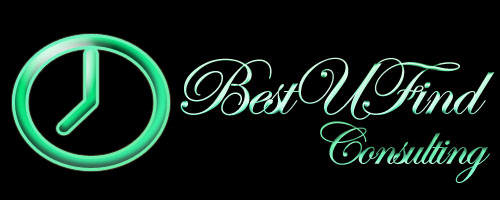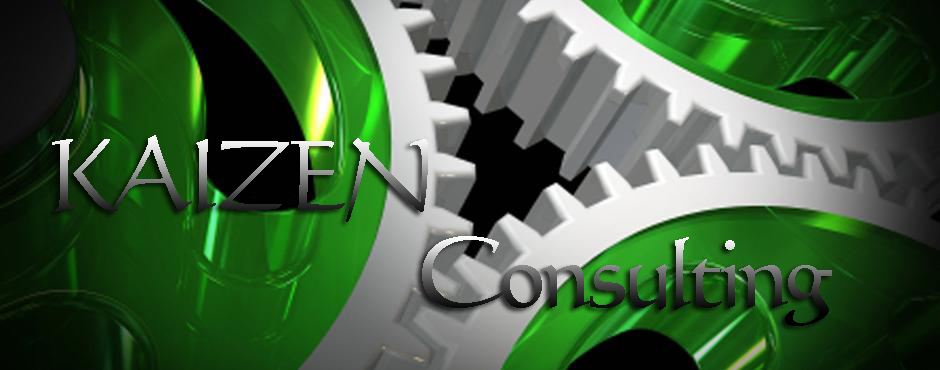Kaizen, Lean Manufacturing and Six Sigma
Kaizen, Japanese for "improvement", or "change for the better" refers to philosophy or practices that focus upon continuous improvement of processes in manufacturing, engineering, game development, and business management. It has been applied in healthcare, psychotherapy, life-coaching, government, banking, and other industries. When used in the business sense and applied to the workplace, kaizen refers to activities that continually improve all functions, and involves all employees from the CEO to the assembly line workers. It also applies to processes, such as purchasing and logistics, that cross organizational boundaries into the supply chain. By improving standardized activities and processes, kaizen aims to eliminate waste (see lean manufacturing). Kaizen was first implemented in several Japanese businesses after the Second World War, influenced in part by American business and quality management teachers who visited the country. It has since spread throughout the world and is now being implemented in many other venues besides just business and productivity. We are here to help you to improve you company in a kaizen manner. Please share with us your opportunity of improvement and we will show you the fastest and the most efficient way to success.
We know what it takes to sustainably grow profitable businesses. Our clients achieve their goals because we help them focus on activities that energize them and structure their companies based on their own unique abilities. As a result, they become the biggest assets to their companies, doing what they love while growing their businesses and taking more time off.
Kaizen adds strategy, calm and personal satisfaction to the lives of entrepreneurs.
Kaizen clients are able to achieve 3 levels of freedom:
- Freedom in their business: doing more of what they love that gives them energy.
- Freedom from their business: more time off to enjoy the rest of life.
- Freedom as a result of their business: higher income and a stronger asset base.
Structure your Business
Entrepreneurs can achieve greater success and freedom by learning how to structure their businesses. There are eight aspects of your business that must be well structured to give you personal and financial freedom.
- Grow as a leader
- Your Profit
- Customer Value
- Fundamental Structures for Growth
- Expanding Delivery Capacity
- Your People
- New Sales
- Repeat Business
- Cash Flow
Grow as a Leader
As a successful entrepreneur, you have expertise and personal strengths that led you to build the business you have today. Getting to the next level of business will help you achieving even more personal freedom and greater personal success. Personal and professional growth are vital elements in this process.
We counsel business leaders on 10 elements of personal growth, which we refer to as personal structures:
- Individual accountabilty
- Taking enough time off
- Aligning company goals with your personal goals
- Focusing on and tapping your unique talents and abilities
- Leadership strategies
- Management vs Micro-management
- Handling difficult conversation and conflicts
- Enhancing negotiation skills, especially in confronting situations
- Growing past personal limits
- Staying strategic as the company grows
Your Profit
Your profit represents one half of the Value Exchange between you and your customers. Although you may have great accounting support, you may not have access to the strategic financial analysis that can help you find powerful information deep inside your financial data. Your traditional financial statements alone won’t give you the information you need to make informed decisions.
Kaizen helps you uncover the financial information that drives profit so you can identify the best path to greater profit as you grow your business.
Bestufind Consulting helps you thoroughly understand how to maximize your profit as you grow your business to continuing stronger levels by working with you on the following:
- Reviewing current profitability by customer, by product or service, by department, and by geography
- Identifying where your future profitability lies
- Defining the best lead sources for your most profitable customers
- Monitoring your finances on a daily and weekly basis
- Finding ways of protecting and maximizing your profit as you grow
Customer Value
Customer Value represents the other half of the Value Exchange between you and your customers. The measurable value you deliver defines your business in the minds of your customers. This is why they choose you over your competition, and why they rave about you to family and friends. It is a priority to understand this value as your customers see it, so you can uncover how to consistently and profitably delight your customers.
We help companies create sensible business processes for assessing customer value over time. And we ensure that our clients can optimize and communicate customer value while protecting profit margins.
Bestufind Consulting helps you clarify and communicate your customer value proposition and optimize your customer value while protecting your profit margins. We structure our work as it follows:
- Defining your desired customer experience in terms of customer results.
- Finding specific ways to enhance your customer value for your most profitable customers
- Checking in with your customers on the value they’re getting
- Customizing your products and services to maximize customer value and increase company profits
- Identifying when your customer base is growing or shrinking
- Clarifying the most effective ways to communicate the value you generate for your customers
Fundamental Structures for Growth
Bestufind Consulting believes that it is easier to sustainably double a company’s gross and net income in 2 years or less, than it is to achieve consistent 15% levels of growth. Sustainable, profitable growth comes when you examine what your business model, systems and processes will need to be when your business is significantly bigger (say, 3 or 4 times bigger) than it is today.We guide successful entrepreneurs through a specific process and empowers them to make smarter decisions about how to allocate resources, structure key business processes and ultimately, how to grow.
Regardless of your level of growth, you will be better positioned to achieve it by clearly envisioning what it will take to get there. Bestufind Consulting helps you to structure your company for growth at any level by working with you on the following:
- Building a series of organization charts for the future, will show you how to achieve your goals for business growth
- Defining new positions and skill sets needed to maintain your customer value and maximize your profits at any size
- Determining who to hire, and when in your company’s growth plans
- Acquiring technologies and timelines required to support your growth
- Defining your role and responsibilities at any stage of growth
Expanding Delivery Capacity
Now, At your current size, customers are perhaps delighted with the product or service you provide and they appreciate your consistency. When you grow, you’re not personally overseeing every major client, you need processes to guarantee that your company will deliver a consistently high standard service even when it’s twice or five times the size it is today.
Bestufind Consulting helps you expand your delivery capacity as you grow, in order to maintain or enhance your customer experience of value, every step of the way. We will work with you on the following:
- Building operational models maintain your high standards of product/service delivery
as your business grows - Building your business to run seamlessly without you overseeing it every minute of
every day - Taking all of the experience and intuitive knowledge that is unique to you and operationalize it across your organization
- Getting all of the above information down on paper and finding the resources to do it without disrupting your business
Your People
Your people are not your biggest asset. Great people are. The rest may cost you money. We will helps you build your team by hiring only A-players (defined as the top 10% of the people available within a given pay rate). We believe A-players are essential to any healthy business. And we know how you may land A-players even if you are a small or medium business.
Bestufind Consulting helps you build powerful teams as you grow by working with you on the following:
- Implementing people strategies to attract and retain A-players
- Building an effective recruiting and hiring process
- Identifying when your people are overworked
- Identifying when employee turnover is a problem and when it is not
- Creating a corporate culture that fits your core values
- Optimizing the performance of your Gen X and Gen Y employees
- Creating benefits and compensation structures designed to maximize employee retention without breaking the bank
- Creating a career path for employees that ensures rising stars stay with you
- Creating professional development strategies in writing for each person on your team
New Sales
Your approach to new sales must reflect the business you’re in, your personal values and the needs of your most profitable customers. Kaizen guides entrepreneurs through the process of new sales development. We help you think through your big picture and long-term strategy so you anticipate a sales model that will keep up with your growth.
Bestufind Consulting helps you evolve your sales strategy for landing new business as you grow by working with you on the following:
- Clarifying the optimal selling process and selling cycle for your growing business
- Focusing your marketing efforts on your most profitable customer segments
- Identifying ‘side-door’ strategies for landing higher-margin business
- Successfully managing your sales team to deliver your goals for revenue and profit
- Defining your strategy for hiring and retaining A-level salespeople
- Creating of a consistent process for training new salespeople
Repeat Business
Even if you have excellent repeat business and referral rates, you can learn proactive strategies to further tap these revenue sources at stronger levels as you grow. Monitoring and understanding your repeat and referral business has direct relevance to your profit.We help companies gain insight into the hidden treasures that lie in their existing business connections.
Bestufind Consulting will helps you enhance your repeat and referral business strategies as you grow by working with you on the following:
- Discovering the lifetime and strategic value of each customer and their referrals.
- Analyzing the percentage of customers that have referred business to you
- Creating a strategy to encourage and reward referrals
- Creating strategies and resources that tap into more repeat and referral business
- Effectively tracking trends in repeat and referral business
Cash Flow
Growing a business often puts a strain on cash resources. It’s vital for your own peace of mind, and for the survival of your business that you have a firm pulse on your cash situation at all times both through, and beyond periods of growth.
Bestufind Consulting will help you create the most suitable cash flow strategies for your business by working with you on the following:
- Analyzing cash flow needs for the next 12 months
- Walking you through banking and borrowing strategies consistent with your business size
- Building financial reserves to support your cash flow strategies
- Anticipating your cash flow needs at different stages of growth
- Finding the best time to approach lending institutions to support your growth
Are you wondering how to maximize your company value.... Bestufind Consulting will help successful entrepreneurs with the skills, tools and additional perspectives they may need to assist them to move forward. We will work with you to transition your role within your business so that you can contribute substantially or entirely at a strategic level, leaving the daily workings of the business to your team. We are not a typical consultancy arrangement where you receive a long-winded strategy document that you must implement alone. Our consultant managers think strategically – but they also make things happen. This consultant service is ideal for business owners who are ready to embrace change and evolution in themselves, and in the company they’ve created or grown.
Please share with us your opportunity of improvement and we will help you to implement appropriately the new successful way from past to future.
Lean manufacturing principles come also from the Japanese manufacturing industry. The term was first coined by John Krafcik in 1988.He had been a quality engineer in the Toyota-GM joint venture in California before coming to MIT for MBA studies. Lean is the set of "tools" that assist in the identification and steady elimination of waste. As waste is eliminated quality improves while production time and cost are reduced. Examples of such "tools" are Value Stream Mapping, 5S, Kanban (pull systems), and poka-yoke(error-proofing).
There is a second approach to Lean Manufacturing, which is promoted by Toyota, in which the focus is upon improving the "flow" or smoothness of work, thereby steadily eliminating ("unevenness") through the system and not upon 'waste reduction' . Techniques to improve flow include production leveling, "pull" production (by means of kanban) and the Heijunka box. This is a fundamentally different approach from most improvement methodologies, which may partially account for its lack of popularity.
The difference between these two approaches is not the goal itself, but rather the prime approach to achieving it. The implementation of smooth flow exposes quality problems that already existed, and thus waste reduction naturally happens as a consequence. The advantage claimed for this approach is that it naturally takes a system-wide perspective, whereas a waste focus sometimes wrongly assumes this perspective.
Both Lean and TPS can be seen as a loosely connected set of potentially competing principles whose goal is cost reduction by the elimination of waste. These principles include: Pull processing, Perfect first-time quality, Waste minimization, Continuous improvement, Flexibility, Building and maintaining a long term relationship with suppliers, Autonomation, Load leveling and Production flow and Visual control. The disconnected nature of some of these principles perhaps springs from the fact that the TPS has grown pragmatically since 1948 as it responded to the problems it saw within its own production facilities. Thus what we see today is the result of a 'need' driven learning to improve where each step has built on previous ideas and not something based upon a theoretical framework.
Toyota's view is that the main method of Lean is not the tools, but the reduction of three types of waste: muda ("non-value-adding work"), muri ("overburden"), and mura ("unevenness"), to expose problems systematically and to use the tools where the ideal cannot be achieved. From this perspective, the tools are workarounds adapted to different situations, which explains any apparent incoherence of the principles above. Please share with us your opportunity of improvement and we will help you to implement appropriately lean manufacturing concept.Six Sigma is a business management strategy, originally developed by Motorola, USA in 1986. Six Sigma became well known after Jack Welch made it a central focus of his business strategy at General Electric in 1995, and today it is widely used in many sectors of industry.
Six Sigma seeks to improve the quality of process outputs by identifying and removing the causes of defects (errors) and minimizing variability in manufacturing and business processes. It uses a set of quality management methods, including statistical methods, and creates a special infrastructure of people within the organization ("Black Belts", "Green Belts", etc.) who are experts in these methods. Each Six Sigma project carried out within an organization follows a defined sequence of steps and has quantified financial targets (cost reduction and/or profit increase).
The term Six Sigma originated from terminology associated with manufacturing, specifically terms associated with statistical modeling of manufacturing processes. The maturity of a manufacturing process can be described by a sigma rating indicating its yield, or the percentage of defect-free products it creates. A six sigma process is one in which 99.99966% of the products manufactured are statistically expected to be free of defects (3.4 defects per million opportunities). Motorola set a goal of "six sigma" for all of its manufacturing operations, and this goal became a byword for the management and engineering practices used to achieve it.
Six Sigma doctrine asserts that:
- Continuous efforts to achieve stable and predictable process results (i.e., reduce process variation) are of vital importance to business success.
- Manufacturing and business processes have characteristics that can be measured, analyzed, improved and controlled.
- Achieving sustained quality improvement requires commitment from the entire organization, particularly from top-level management.
Features that set Six Sigma apart from previous quality improvement initiatives include:
- A clear focus on achieving measurable and quantifiable financial returns from any Six Sigma project
- An increased emphasis on strong and passionate management leadership and support
- A clear commitment to making decisions on the basis of verifiable data, rather than assumptions and guesswork
The term "Six Sigma" comes from a field of statistics known as process capability studies. Originally, it referred to the ability of manufacturing processes to produce a very high proportion of output within specification. Processes that operate with "six sigma quality" over the short term are assumed to produce long-term defect levels below 3.4 defects per million opportunities (DPMO). Six Sigma's implicit goal is to improve all processes to that level of quality or better.
In recent years , some practitioners have combined Six Sigma ideas with lean manufacturing to create a methodology named Lean Six Sigma. The Lean Six Sigma methodology views lean manufacturing, which addresses process flow and waste issues, and Six Sigma, with its focus on variation and design, as complementary disciplines aimed at promoting "business and operational excellence". Companies such as IBM use Lean Six Sigma to focus transformation efforts not just on efficiency but also on growth. It serves as a foundation for innovation throughout the organization, from manufacturing and software development to sales and service delivery functions.
Methods
Six Sigma projects follow two project methodologies inspired by Plan-Do-Check-Act Cycle. These methodologies, composed of five phases each, bear the acronyms DMAIC and DMADV.
- DMAIC is used for projects aimed at improving an existing business process.
- DMADV is used for projects aimed at creating new product or process designs.
DMAIC project methodology has five phases:
-
D efine the problem, the voice of the customer, and the project goals, specifically.
-
M easure key aspects of the current process and collect relevant data.
-
A nalyze the data to investigate and verify cause-and-effect relationships. Determine what the relationships are, and attempt to ensure that all factors have been considered. Seek out root cause of the defect under investigation.
-
I mprove or optimize the current process based upon data analysis using techniques such as design of experiments, poka yoke or mistake proofing, and standard work to create a new, future state process. Set up pilot runs to establish process capability.
-
C ontrol the future state process to ensure that any deviations from target are corrected before they result in defects. Implement control systems such as statistical process control (SPC), production boards, visual workplaces, and continuously monitor the process.
DMADV or DFSS ("Design For Six Sigma") - project methodology features five phases:
- D efine design goals that are consistent with customer demands and the enterprise strategy.
- M easure and identify CTQs (characteristics that are Critical To Quality), product capabilities, production process capability, and risks.
- A nalyze to develop and design alternatives, create a high-level design and evaluate design capability to select the best design.
- D esign details, optimize the design, and plan for design verification. This phase may require simulations.
- V erify the design, set up pilot runs, implement the production process and hand it over to the process owner(s).
Six Sigma is effective at what it is intended to do, but that it is "narrowly designed to fix an existing process" and does not help in "coming up with new products or disruptive technologies." Advocates of Six Sigma have argued that many of these claims are in error or ill-informed
A more direct criticism is the "rigid" nature of Six Sigma with its over-reliance on methods and tools. In most cases, more attention is paid to reducing variation and less attention is paid to developing robustness (which can altogether eliminate the need for reducing variation).
Please share with us your opportunity of improvement and we will help you to implement appropriately six sigma projects.









